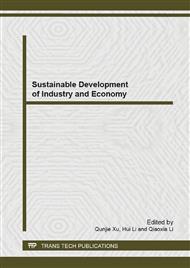p.702
p.706
p.710
p.714
p.718
p.726
p.732
p.737
p.741
The Major Environmental Policies' Impact on the Resource-Based Regional Economy: A CGE Modeling Analysis
Abstract:
The rapid development of the resource-based economy causes many environment problems. Some environmental policies are thought to be more effective than other tools for solving those problems. The paper established Social Accounting Matrix from Inner Mongolia's statistic data and Input-Output table of 2007. The CGE model simulated the effects of environmental policies on energy saving, emission reduction and different industries. The result shows that increases of 10% and 20% in resource tax rates have negative effects on the local economy, but positive effects on energy intensity and pollution emission. Moderate increase in energy price and pollutant discharge fee has negative impacts on the local economy with different extents. Increase in energy price has significant negative effects on the local economy, but prominent positive effects on pollution emission and energy intensity. So the best policy option should be to increase either resource tax or pollutant discharge fee, or both.
Info:
Periodical:
Pages:
718-725
Citation:
Online since:
December 2013
Authors:
Keywords:
Price:
Сopyright:
© 2014 Trans Tech Publications Ltd. All Rights Reserved
Share:
Citation:


